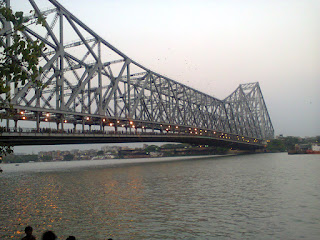we find raga,a sanskrit word, in the famous book Natya Shastra, written by sage Bharat. Raga is defined as the act of coloring of moods and emotions. Ragamala means a garland of ragas. Raga is a musical form of swara, a melodic scheme, on which Indian music is based and rendered extensively. According to traditional rules, these ragas have been formed and have alphabetical notes as the base, and differ slightly from one raga to another. These ragas are played at particular seasons and at particular time of the day. Ragas have been classified as dawn ragas, mid-day ragas, dusk ragas and mid-night ragas based on time theory. Mainly, the ragas have a strong association with nature and reflect the cycles and moods of nature in a subtle and sensitive way.
Bhairavi Raga, one of the main six ragas on which ragamala paintings are based, is a morning raga. Associated with summer season, this raga is one of the rare ragas, which is played in all seasons. The reigning deity of this raga is Shiva. Bhairav is another name of god shiva, who is the creator of the world. So we find a number of paintings based god Shiva in Bhairav ragamala paintings [Bhairava –raga, and Bhairavi- ragini - are male and female ragas]. The paintings based on this raga are religious, devotional, and spiritual. In this series, one sees god Shiva in different forms and being worshipped. This raga evokes a peaceful and soothing feelings; sometimes serious and sad feelings too.
Shaivism is practiced as a religion widely in India. Usually in the temples, Shiva is worshiped in the form of lingam. Linga as a signifier denotes Lord Shiva, and the signified is creation of the universe. Linga and yoni, representing the universe and the earth respectively, in union as the creators of world, are worshiped throughout India. This philosophy speaks about the origination of life on the earth and the relation of soul with the divine and its evolution. This philosophy reflects in the paintings through the amalgamation of music, poetry and painting.
 Visually rich and poetic ,this painting offers a view of a woman worshiping lingam, which is a sign of Shiva, the creator of the world. The mood of the painting gives a feeling of peace blended with devotion and spirituality. The background with rhythmically flowing water, and flora and fauna, signifies the birth and the activities of life. The amalgamation of blue and white colors in soft tones, in the composition, produces a peaceful effect. Horizontally and vertically arranged forms offer an interesting visual effect to the viewers. Another woman seems to be assisting and chanting devotedly.
Visually rich and poetic ,this painting offers a view of a woman worshiping lingam, which is a sign of Shiva, the creator of the world. The mood of the painting gives a feeling of peace blended with devotion and spirituality. The background with rhythmically flowing water, and flora and fauna, signifies the birth and the activities of life. The amalgamation of blue and white colors in soft tones, in the composition, produces a peaceful effect. Horizontally and vertically arranged forms offer an interesting visual effect to the viewers. Another woman seems to be assisting and chanting devotedly.
.
In Indian Mythology, we see number of gods with specific animals as their vehicles and with their particular weapons and musical instruments. Here in this interesting painting, we see Shiva sitting on Nandi, a bull. Bull as his vehicle is seen in all shaiva temples throughout India. Usually, Nandi [Bull] is seen in seated position in front of lingam. Trishul is Shiva's weapon; damaru his musical instrument. We come across big size bulls in front of lingam, in Shaiva temples throughout India. To get insights, these small details help to identify the significance of forms and relate to other forms. These paintings shows what was the culture of that period and how they revered and glorified beauty of nature with music, poetry and painting.






















